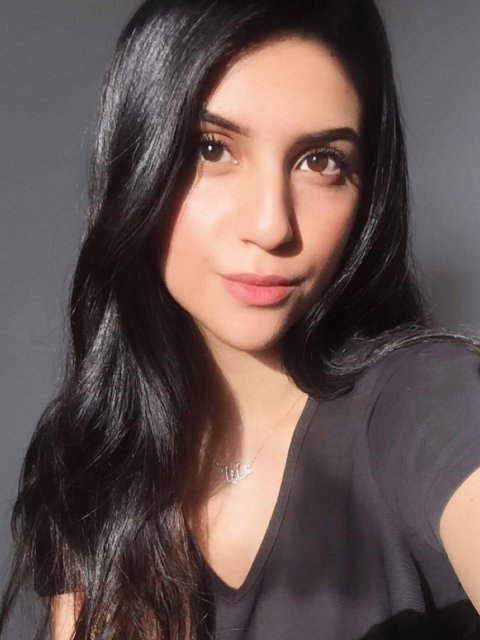Our world is changing. Of course, it always is, but there has been a certain intensity in the last two years. A pandemic reshaping the way we interact; wildfires and floods of a climate crisis urging us to change how we live; and brutality from those in power revolutionising who we hold accountable. It's all interwoven into an inextricable fabric.
Amplifying voices
But what really ties this fabric together, and has fuelled its intensity, is how connected we all are. It's how the voices of ordinary people in extraordinary situations, in quarantine, in protests, in warzones, in earthquakes, are amplified when heard across the world.
Beyond just mass globalisation, we exist in micro-pockets of connectivity. Ignorance in the face of all these changes is no longer an option when information is force-fed to us in a cacophony of notification pings, news flashes and satirical memes. It is not enough to say you don't 'trust the media' because we are becoming our own source of information.
You can hear everyone's story with a quick scroll through TikTok for some of the most candid grassroots reporting our world has seen. Today, if you wonder about Inuit cultural practices or indigenous Amazonian communities or the strife of the Afghan people, you can cut through the noise and hear directly from them. Geographical barriers and political borderlines are blurred by our interconnectedness. Lives are documented in a breathing digital collage, and we are all the artists.
Brand reaction
Brands are responding to this cultural shift towards the cyclicality of interacting, learning, and growing from one another's lived experiences. For example, Google's latest campaign reassures us that "it's OK not to know". Using its status as a household brand, its "search on" campaign embodies the beauty of seeking knowledge in ensuring "the more we learn, the closer we get", centring on culture and identity.
FARFETCH, an online marketplace for global luxury fashion, tells a multi-layered story of community in its latest campaign. Boutiques and designers interact with artists, writers, and curators around the globe to sell on fashion pieces in an empowering, emotional narrative of global interconnectivity and equality.
As I said earlier, our world is changing and so are we. Our perceptions of self are flexing from rigid to fluid, with this drive towards shared knowledge making significant space for embracing multiplicity. Growing cultural conversations are recognising the importance of intersectionality: that we are not one thing at any point in time. Walt Whitman's visionary idea that "I contain multitudes" in Song of Myself from the 1800s captures this zeitgeist today. In an age where we embody ever-shifting identities, don't we all contain multitudes?
Multi-hyphenates are the future
Indeed, the future-shapers and trailblazers of the incoming generations are multi-hyphenates. Emma Raducanu, born in Canada to Romanian and Chinese parents, made US Open history representing mixed heritage identities. Alex Scott, MBE and TV sports presenter, laughed in the face of classist comments this summer against her working-class accent, unapologetically representing her East London identity.
Greta Thunberg speaks on the planet's climate crisis to crowds of world leaders representing the strength of neurodiversity, calling her Asperger's a superpower. These are not "extraordinary" people. These are ordinary people, whose differences are their extra strength.
A hunger to understand and appreciate each other's differences through cross-cultural hybridity is enriching our lives, so what does this mean for research?
It means true diversity and inclusion. Within the industry and beyond, Diversity and inclusion has been framed as offering a commercial benefit. It goes along with better business performance, greater profitability, more empathetic client servicing and short-term sales, but this attempts to quantify something which should be all-encompassing in the way we do research.
The problem with selling D&I as purely a business boost is that it devalues diversity. Putting a price on D&I perpetuates the self-interested myth that minorities are only deserving of inclusion if they bring economic gain. Why must the big, beautiful, bold and complex voices, the extraordinary stories of ordinary people, be reduced down to numbers to hold value?
True inclusion is not an add-on to a charter, to be signed and forgotten about, or merely tokenistic recruitment methods. Employ diverse researchers because you want to hear from them. Broaden the scope of your research stimulus because you want to be representative. Champion your colleagues' stories because you want to learn.
Dangers of over-simplification
Truly valuing superdiversity and multiculturalism means reaching into those once forgotten hyperlocal places that we now have access to on a global scale, the marginalised and under-represented communities who hold the power to strengthen our understanding. It means going beyond listening but providing platforms for these voices to speak. It is no longer enough to simply fill diversity quotas. Research methods must flex to consider diverse information sources, zines, collectives, youth magazines, multimodal media.
Agencies hold the outreach responsibility of recruiting not just those with academic credentials, but also those with diverse life experiences: of struggle, of hybridity and of grit, that give them the skills to enrich the research industry. To achieve extraordinary research outputs, we must put the work into discovering the superpowers of ordinary people that can bring extraordinary strength to our insights.


